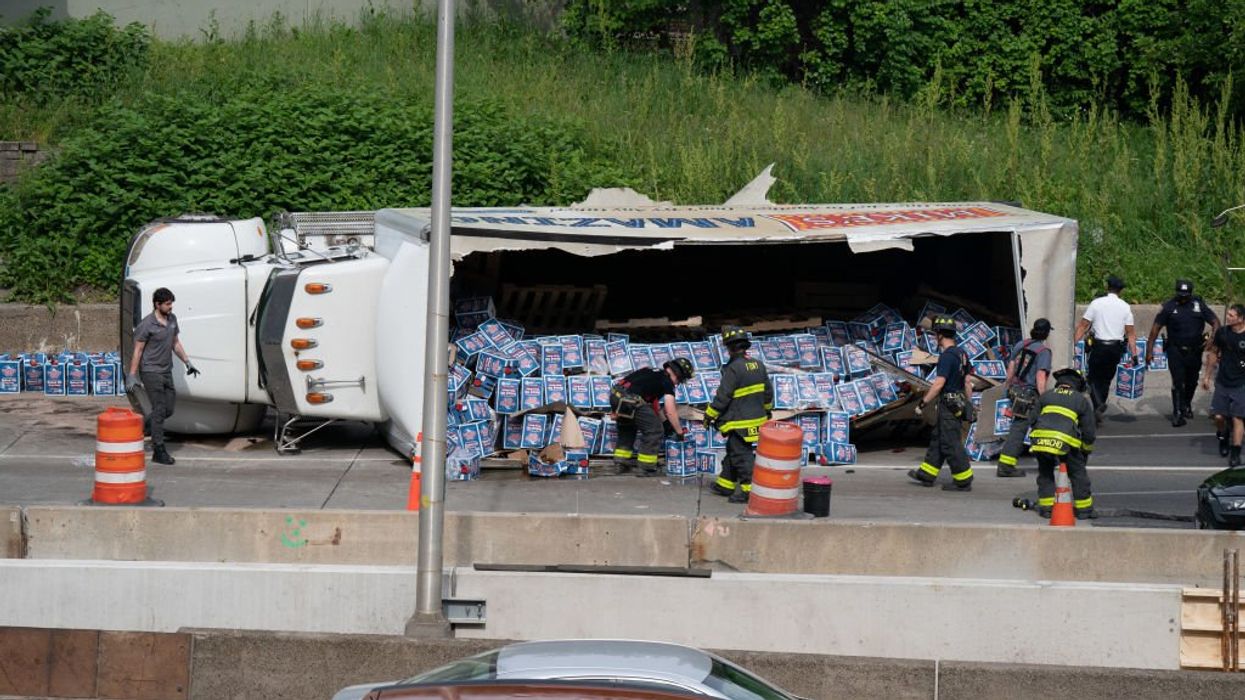
© 2024 Blaze Media LLC. All rights reserved.
"a phenomenon that occurs when the earth’s violent shaking forces sand particles...to shift apart"
The videos started popping up as soon as the earthquake and tsunami hit Japan last month. They show the ground beneath japan seemingly coming alive, moving and swelling like ocean waves. Water also seems to appear out of nowhere. One video in particular caught the eye of Glenn Beck on radio this morning. It's called "liquefaction." But how does it happen? We have the answers for you.
First, some of the videos (the first one is the one Beck talked about):
Earlier this month, the Washington Post did a story on the city of Urayasu, Japan, which because of this phenomenon is falling apart. It explains what exactly causes liquefaction:
To the list of destructive forces that have wracked Japan — earthquake, tsunami, radiation from a crippled nuclear power plant — can be added liquefaction, a phenomenon that occurs when the earth’s violent shaking forces sand particles, once packed tightly, to shift apart and allow water to seep in.
A website that claims to be part of the University of Washington explains more:
Liquefaction is a phenomenon in which the strength and stiffness of a soil is reduced by earthquake shaking or other rapid loading. Liquefaction and related phenomena have been responsible for tremendous amounts of damage in historical earthquakes around the world.
Liquefaction occurs in saturated soils, that is, soils in which the space between individual particles is completely filled with water. This water exerts a pressure on the soil particles that influences how tightly the particles themselves are pressed together. Prior to an earthquake, the water pressure is relatively low. However, earthquake shaking can cause the water pressure to increase to the point where the soil particles can readily move with respect to each other.
According to the Post story, the Japanese city is particularly susceptible to the phenomenon because of the make-up of its soil:
Susumu Yasuda, a civil engineer from Tokyo Denki University, said that Urayasu is highly susceptible to liquefaction because the town, built after World War II, sits on reclaimed land made from a mix of volcanic ash, garbage and sand dredged from Tokyo Bay.Although the Japanese government had enacted stricter liquefaction building codes for factories after a 1964 earthquake, most residential homes were built without 60-foot underground steel reinforcement poles, which were considered too expensive, Yasuda said.
He said he worries that Urayasu officials are rebuilding too quickly, noting that the ground remains vulnerable to repeated liquefaction if a major aftershock occurs. In Christchurch, New Zealand, a February aftershock from an earthquake in September sent mud oozing 20 inches above ground — higher than it had piled during the initial quake.
No matter if it's expected or not, the footage is still awe-inspiring.
Want to leave a tip?
We answer to you. Help keep our content free of advertisers and big tech censorship by leaving a tip today.
Want to join the conversation?
Already a subscriber?
more stories
Sign up for the Blaze newsletter
By signing up, you agree to our Privacy Policy and Terms of Use, and agree to receive content that may sometimes include advertisements. You may opt out at any time.
© 2024 Blaze Media LLC. All rights reserved.
Get the stories that matter most delivered directly to your inbox.
By signing up, you agree to our Privacy Policy and Terms of Use, and agree to receive content that may sometimes include advertisements. You may opt out at any time.


